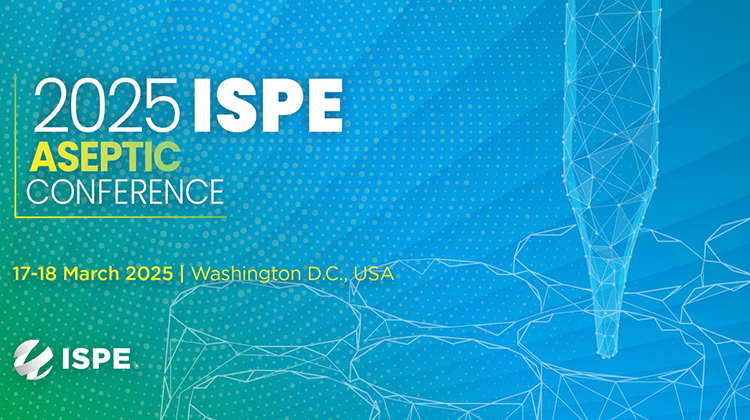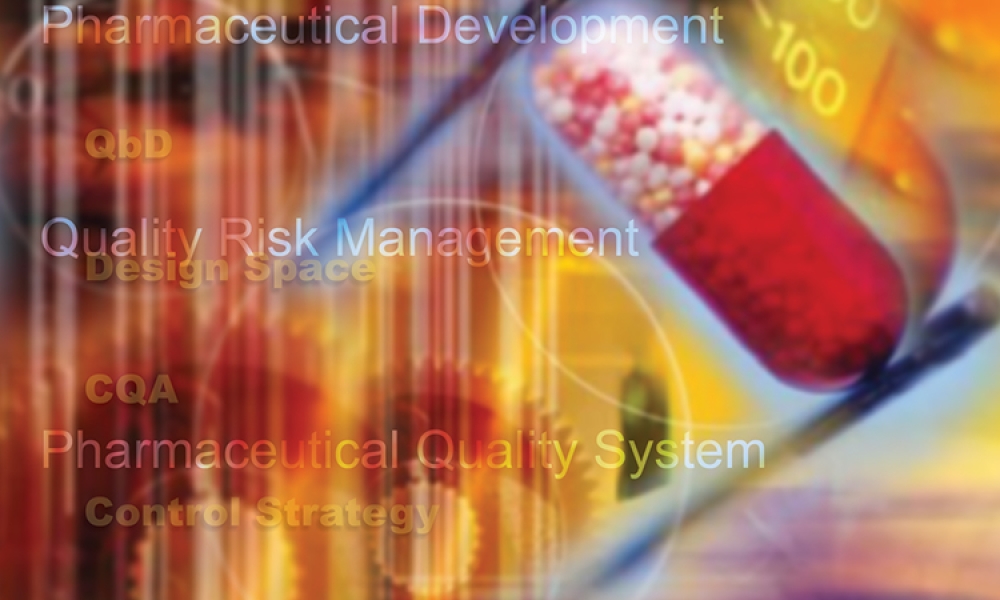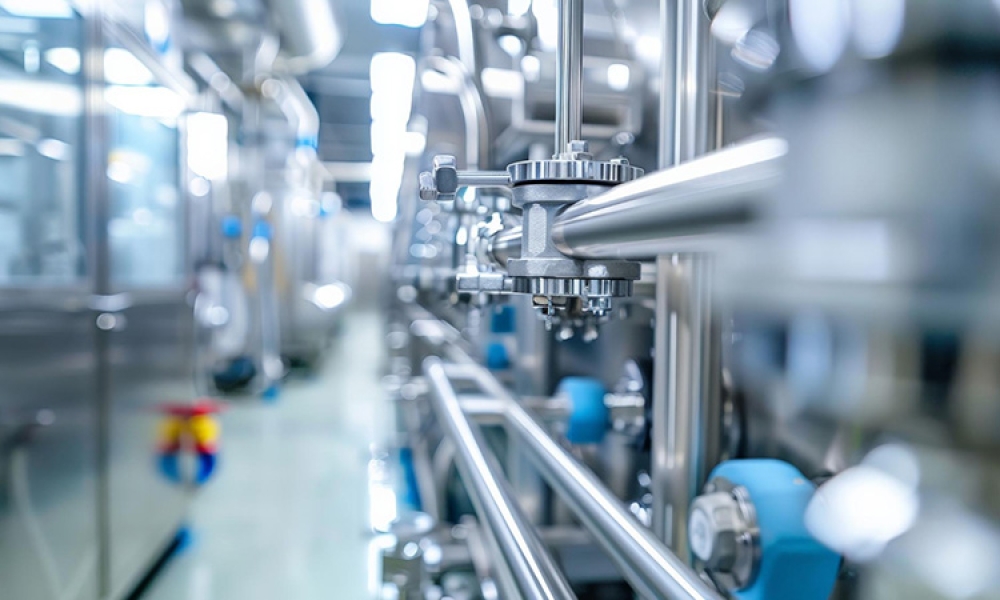A Message from the 2025 ISPE Aseptic Conference Chair

The 2025 ISPE Aseptic Conference, taking place 17 – 18 March 2025 in Washington, D.C., USA, has always been one of the more future-focused technical conferences within ISPE. Originally called the ISPE Barrier Conference, its emphasis lies on the procedures and technology of restricted access barrier systems (RABS) and isolators.
The 2025 ISPE Aseptic Conference is supported by an incredible team of ISPE staff as well as a team of volunteers who truly have a heart for making this conference incredible. Even before the 2024 conference was held, the team was recruiting topics and speakers for the 2025 event. The abstracts that were submitted by industry professionals around the globe are incredible and will make for a conference where there is much to learn for all. The topics of the conference will help attendees to move their companies forward.
This year, the ISPE ATMP Community of Practice (CoP) will be running a track of the 2025 ISPE Aseptic Conference on ATMP production. This all-day track will showcase the very different operational steps associated with ATMP products and will include concepts around protecting patients.
The presenters will address topics such as the advanced therapy lifecycle, manufacturing efficiencies, and utilizing isolators for cell therapy production. They will also address Annex 1 requirements including contamination controls strategies (CCS) documentation development, with examples shared for discussion. Erich Bozenhardt from United Therapeutics Corporation and Nidhi Shah from Bristol Myers Squibb will be leading the ATMP discussions and will be sharing real-world realizations and working solutions.
ISPE will also offer the Aseptic101 workshop, a unique opportunity for students and recent graduates to learn more about aseptic pharmaceutical manufacturing. This introductory session is designed to help first-time attendees gain foundational knowledge in aseptic processing, learn more about ISPE, and explore career opportunities within the pharmaceutical industry. Up to 20 students will have the chance to attend both the workshop and the full conference, where they can connect with experienced professionals, expand their networks, and receive invaluable guidance as they embark on their careers. This program has received excellent feedback from past participants and continues to be a highlight for those beginning their journey in aseptic processing. If you are interested, submit your application for a chance to attend.
ISPE is thrilled to announce that key representatives from the US Food and Drug Administration (US FDA) are slated to present on day one of our conference as our keynote speakers. When the US FDA speaks, the industry listens. The last time a US FDA representative spoke on the stage, there were laughs and gasps at some fascinating videos of recent inspections and findings. The US FDA always gives a great state of the industry outlook and focuses the audience on the topics that are important. The Agency representatives will participate in a regulatory panel on 18 March 2025, responding to questions and topics from the audience. This is one of the more fun and interesting parts of the overall conference, the structure allowing the attendees to get answers to specific questions impacting their businesses.
Industry keynote speakers, such as Sumit Verma of TAG 1 Inc., and Matt Edwards from Eli Lilly and Company, will give some clear insight into two of the growing markets in the industry: radiopharmaceuticals and GLP1 production. The third keynote presentation, which is supported by ISPE’s Women in Pharma®, will be presented by Yolanda McLean from Alnylam Pharmaceuticals, Inc. She will discuss the role leadership, emotional intelligence, and team dynamics have in compliance.
Advanced modalities will be discussed in two different sections, and the complexities and basics surrounding the design and operation of facilities producing antibody drug conjugates (ADCs) and radionucleotides will be addressed. Both therapy types have seen significant growth in recent years, revolutionizing cancer treatments. ADCs which combine antibodies with a linker and a payload drug have demonstrated remarkable efficacy in targeting and destroying cancer cells while minimizing damage to healthy tissues. This precision and improved patient experience has led to a surge in US FDA approvals and even more products being researched and developed. Similarly, radiopharmaceuticals which use radioactive substances to diagnose and treat diseases, have become more precise and safer. This has expanded their use in earlier lines of therapy. These theranostic formulars are transforming the way oncology is approached. Both modalities are attracting substantial investments and acquisitions from major players.
As always, the center of the aseptic process is the filling operation. There will be two sections that will solely focus on future concepts of filling operations. During these sessions, the presentations will address ready-to-use systems, glove interventions, a holistic approach to aseptic line setup using high automation, and powder filling systems, with a focus on managing sustainability and unfavorable particles. These presentations will represent the future state of both small batch isolated filling, as well as the future state of commercial lines. This is where attendees can look into the crystal ball of the future of technology. The presenters will present solutions that can fundamentally change the way professionals think about their next filling line, facilities, and operational team planning.
Regulatory concepts and automation and information management are always a key part of the 2025 ISPE Aseptic Conference. There will be discussions focused on artificial intelligence (AI) and machine learning (ML) which are already being utilized within the manufacturing environment to enhance operations and efficiencies. Furthermore, the conference topics covered will include deep learning for automated visual inspection, performing complex visual inspection process transfer, and a session on lessons learned. CCS will also be front and center for many discussions, including a discussion about a fast risk assessment tool, a new guidance document on “separative devices” (RABS, isolators, active pass-throughs, local grade A air supply, etc.), and validation of sterilization of critical equipment.
Sterility assurance and release criteria are always important (and sometimes controversial) topics within aseptic filling operations. The 2025 ISPE Aseptic Conference will showcase some new content on sterility and release addressing this complex issue across the industry. The ATMP products and ADC presentations will also cover sterility testing. Members of the ISPE Japan Affiliate Sterile Products Processing CoP will be presenting an analysis of ultrasonic aerosol dispersion. Utilizing vaporized hydrogen peroxide (VHP) within a room production zone around a RABS-protected line will be discussed. A fascinating example of a dye ingress to package integrity will give attendees new things to learn and talk about. The conference chair is particularly thrilled about the US FDA's presentation on alternative microbial methods.
One of the most informative sections of the 2025 ISPE Aseptic Conference contains case studies. Case studies allow attendees to learn from how others are approaching the design, implementation, and operation of our formulation, component preparation, filling, inspection, and packaging equipment and facilities. This year’s presentations touch upon implementing Annex 1 and planning for continuous improvements, benchmarking aseptic manufacturing, and planning for syringe and cartridge filling which is critical to the production of many of the GLP1 drugs on the market. The case studies track also includes presentations about viable real-time monitoring planning and advanced lines for the future, including how to move from RABS-based operations to isolator-based operations, and the impact it will have.
A favorite event of the conference is the industry panel. This year, the planning committee plans to organize it in the form of a fireside chat consisting of industry leaders with deep technical knowledge. The 2022 revision to the EU/GMP and Pharmaceutical Inspection Co-operation Scheme (PIC/S) Annex 1 is multifaceted. Its broad scope and areas of focus may impact each organization differently. For one company, the greatest impact may be in the expectations around airflow visualization studies or material transfers into grade A; another may need to focus on pre-use post sterilization integration (PUPSIT) or using barriers such as RABS or isolators; a third might be challenged to develop a robust QRM/CCS. In this Annex 1 industry panel, the panelists will discuss their view of Annex 1’s impact on different modalities, their experiences implementing changes to align with the revision, and how inspectors have reacted to these changes.
Whether the interest is in exploring cutting-edge insights on advanced modalities, practical knowledge on contamination control, or a fresh perspective on sterility assurance, the 2025 ISPE Aseptic Conference promises an array of high-value content to elevate your work and broaden attendees’ understandings. The industry thrives on shared knowledge and collaboration, and this year’s event is set to deliver on both fronts. Join ISPE in Washington, D.C., USA—or tune in virtually—to be part of the conversations shaping the future of aseptic processing. ISPE is excited to see attendees there and to help turn ideas into action for businesses.



